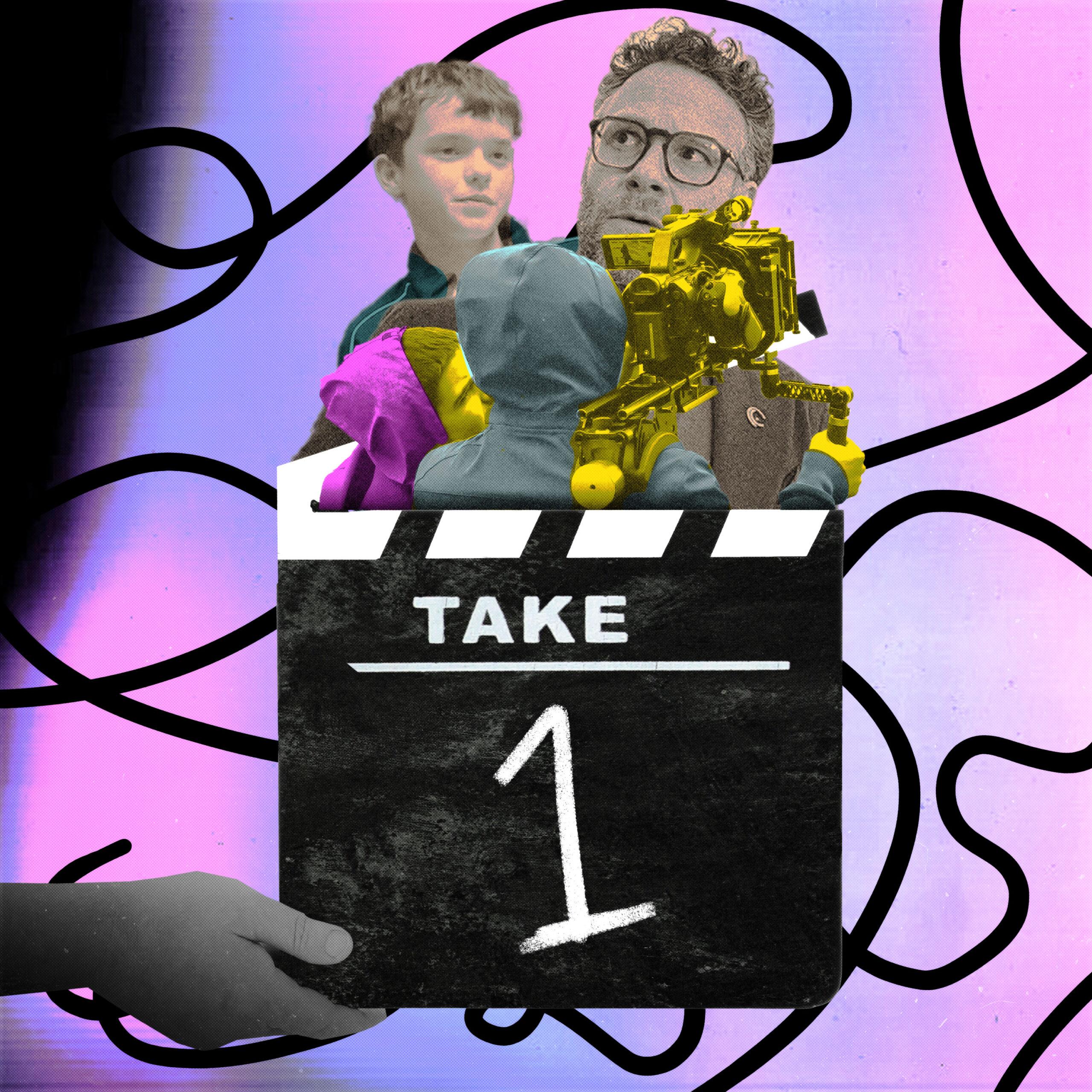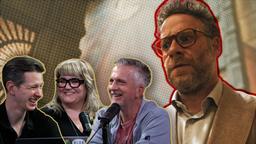
“Oners are so stupid,” declares a Hollywood executive (Ike Barinholtz) in the second episode of The Studio, the new Seth Rogen showbiz sitcom that premiered on Apple TV+ this week. The character is talking about the painstaking, often costly matter of filming an entire sequence of a movie in a single, uninterrupted shot, with no cuts or coverage. “It’s just the director jacking off while making everyone’s lives miserable,” he continues as he and his boss, newly minted studio head Matt Remick (Rogen), tour the set of a film they’re producing, preparing to watch a director (Sarah Polley, playing an exasperated version of herself) attempt the very coup of careful choreography that he’s dismissing offhand. Take one guess about how Rogen and Evan Goldberg, his codirector, friend, and frequent collaborator, have opted to film the ensuing, calamitous set visit. Here’s a hint: The episode itself is called “The Oner.”
Ask a real Hollywood executive, and they’d probably tell you that oners are having a moment right now. There are a lot of them in The Studio: While not every episode of the show is entirely cut-free, most of it is filmed to minimize cuts, the camera shadowing Rogen like a harried assistant. Not continuous enough for you? Over on Netflix, the acclaimed British miniseries Adolescence tells a disturbing tale of violence and shattered innocence across just four shots, each lasting the complete, roughly hour-long length of an episode. And arguably the watercooler TV event of the year so far, Severance, opened its belated second season with a particularly showy, digitally abetted example of the spring TV season’s hottest technique.
Three makes a trend, but the industry’s love affair with keeping the camera rolling started long before January. The more ambitious network dramas of the 1990s, like ER and The X-Files, played with the oner plenty. But television really started dabbling in it about a decade ago, with the slam-bang panoramas of Steadicam combat in the inaugural seasons of True Detective and Daredevil. Thereafter, everything from Barry to The Bear has done an “Oh, this shot is still going, isn’t it?” installment. Even It’s Always Sunny in Philadelphia got in on the game of seeing how long a take can run.
Meanwhile, on the big screen, blockbusters have continued to absorb the oner into their visual vocabularies—a stylistic tendency that’s only grown more prevalent since 2018, when The Ringer took note of notably extended sequences in Black Panther and Atomic Blonde. Fight scenes now regularly unfurl without interruption, in part to give us the clearest view of the ass whooping Keanu and his imitators are meting out at great length. Of course, mainstream movies don’t have a monopoly on dragging a shot out to its temporal limit. The oner is a tool of high and low cinema; you could say that pressing play and walking away is the only thing that last year’s scathing Romanian satire Do Not Expect Too Much From the End of the World has in common with the Apple spy caper Argylle.
The oner is a magic trick, and not a new one. Like a shot that just keeps going and going, its popularity stubbornly persists. Technology is one culprit. Back in 1948, Alfred Hitchcock had to find clever ways to mask the cuts in his Rope, creating the illusion of a one-shot feature film with a celluloid camera that could capture only about 10 minutes of footage at a time. The video revolution eliminated such restrictions, allowing filmmakers to shoot indefinitely while also supplying them with newly digital means of disguising edits and staging elaborately unbroken action (like the green-screen hallway brawl with which the last Guardians of the Galaxy climaxes). Of course, with these new tools came new benchmarks of showboating aspiration: If part of the draw of the oner is the implicit impossibility of its execution, it’s no big surprise that filmmakers have found ways to steepen the difficulty for themselves—by, for example, pulling off an actual feature-length shot without invisible cuts, like the one that fills all 138 minutes of the German crime thriller Victoria.
It’s also not difficult to grasp the timeless allure of these herculean exercises in blocking and supremely precise camerawork. Rogen’s Remick makes the film-bro case for them in “The Oner,” waxing rhapsodic about the fusion of “artistry and technicality,” before reverently referencing all the most relevant examples: the long walking tour of the Copacabana in Goodfellas; the mob assault on the getaway car in Children of Men; the still amazing ambulatory opening minutes of I Am Cuba, when the camera dances and careens skyward and dives under the water, all without any visible break in the action. Oners are basically Olympic feats of planning and perseverance: To gawk at a particularly protracted and complicated shot is to see all the craft and labor that went into its meticulous construction. They’re monuments to their own virtuosity.
Of course, that’s also the plainest case against the technique. To the unimpressed, oners often come across as an act of glorified self-glorification—of directorial masturbation, as Barinholtz’s character puts it. The irony is that a device supposedly ideal for locking the audience into a particular space and time frame can actually hold the viewer at arm’s length: It’s hard to get immersed in a movie or an episode when you’re constantly marveling at the how of its orchestration or consulting an invisible stopwatch. Consider the “look Ma, no cuts” brio of something like 1917, a war movie so intent on dazzling you with its cinematographic ambition that it begins to look as excessive and wasteful as a doomed military campaign, burning resources in the pursuit of glory. And isn’t there something rather self-consciously macho about a shot that just won’t end? Consider all that obsession with length …
At their very best, oners attune audiences to the wavelength of the characters, syncing our internal clocks with those of the people on-screen. That’s the persuasive rationale for the way Adolescence elides all cuts. The real-time structure of the pilot, which chronicles the arrest and interrogation of a preteen boy suspected of killing a classmate, allows for a kind of four-dimensional depiction of a murder investigation, shining a light on all the moving and sometimes colliding parts of a police station. More than that, though, Adolescence keeps the camera running as a way to trap us in the grueling emotional ordeal it depicts; like the horrified parents or the officers on the case, we’re never allowed to avert our eyes.
Few attempts to stretch a shot out like a piece of taffy are as purposeful and devastating as these four episodes of grueling TV. But even the most self-indulgent oner (like The Studio’s episode-spanning, single-take, chaos-on-the-set farce) has a certain knee-jerk, antidotal value in an age of instant gratification and shortened attention spans. Whether strapping us into an emotional roller coaster or simply calling attention to their own bombastic design, oners make duration the main attraction. They get us to slow down and just watch—an ageless pleasure all but lost in a world where content comes in short, dopamine-triggering bursts, missed at a blink.


